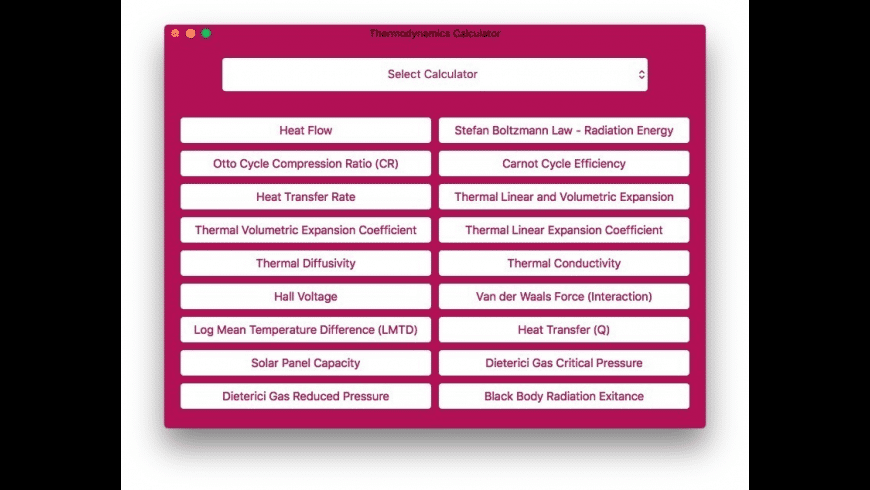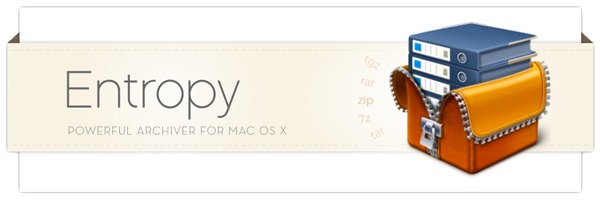Entropy Piano Tuner (EPT) - a free software for piano tuning. There are many alternatives to Entropy for Mac and since it's discontinued a lot of people are looking for a replacement. The most popular Mac alternative is WinRAR, which is free.If that doesn't suit you, our users have ranked more than 50 alternatives to Entropy and many of them are available for Mac so hopefully you can find a suitable replacement.

Have you ever received RAR files on your mac? And MacOS doesn’t allow you open RAR files on Mac directly, you need to download third-party software to extract RAR file on Mac.
The best thing about RAR files, it reduces the file size and bundles them into a single document so you can conveniently share them. RAR also offers you to password protection and error recovery feature. And Often use to transfer data because it is an effective method of compression that helps to compress large amounts of data into single files.
Contents
- 1 Guide To Open RAR Files on Mac with Apps:
- 2 9 Apps To Open RAR Files On Mac:-
Guide To Open RAR Files on Mac with Apps:
macOS doesn’t allow you to open RAR files directly due to its format closed proprietary nature. RAR is not as much popular as the zip is but offers a better comparison. To extract RAR files on your mac you need to reverse the file comparison. Several RAR extractors are available on the internet that can help you to extract RAR files, Let’s discuss them one by one.
1. The Unarchiver:-
The Unarchiver is the most popular RAR opener available for macOS. The Unarchiver RAR mac is free and easy to use RAR extractor. It supports various archive formats such as Zip, Zipx, XAR, and so many. To open any RAR file using the unarchive RAR Mac follow simple steps:-
- Choose the achieve file you want to open.
- Go to file and get info menu.
- And open archive file with The Unachiever.
- Click on change all.
The Unachiever saves your lot of time when dealing with archives files. Microsoft office download for free for mac.
2. BetterZip:-
BetterZip is another great RAR extractor for mac. You can add or deletes files from archives, also you can move and rename archives. Also, you can protect your data with the help of encryption so your sensitive information cannot be accessed by an unauthorized person. Also by using BetterZip, you can add, delete or update archive comments.
3. IZIP:-
IZIP is a powerful and effective tool to open RAR files. It is completely free so you can Zip, UnZip and Unrar files without any limitation.IZIP is very simple to use, files can be easily managed, compressed and uncompressed without a lot of effort. Security is our very big concern when we are sharing files confidential that need not to be accessed by any unauthorized user, IZIP gives you 256-bit encryption to add an extra layer of security.
4. WinZip For Mac:-
WinZip is the best tool for all of them who has recently shifted from windows to iOS and wants to extract RAR files on Mac. Then WinZip is a great tool for you to do this. You can simply Zip and UnZip files on your Mac and supports up to 12 plus format option. Protect your files with WinZip AES encryption.
5. B1 Free Achiever:-
B1 Free Archiver is a friendly and simple RAR file extractor. It is free to download you need to pay, supports all popular types of archive formats. It is very simple to use so you don’t read any manual to extract your RAR file. Encryption with a password makes it more secure
6. Keka:-
Keka is a simple and strong platform to extract RAR files on macOS. AS you all know that time is changing now everyone is considering security. Keka also gives you AES-256 encryption to make your files more secure. If your files are too big then using Keka you can split your files into pieces for more convenient sharing.
7. Entropy:-
Entropy has designed only for macOS. Entropy is a powerful archiver for mac. It supports more than 30 archive formats such as RAR, Zip,7z and so more. Entropy comes with finder integration so you can directly extract your archive from the finder. The built-in password feature of Entropy makes it even more powerful.
8. iPack:-
iPack is a full-featured RAR extractor for macOS.It comes with finder integration so you can easily compress or extract your files directly from the finder. Quick preview makes it a better choice for all of them who want to preview files without extracting them. And also gives you full password protection so you can share your files without worrying about their privacy.
9. Using Online Tool Extract.me:-
Extract.me is a powerful online tool to extract RAR files online. If you’re among them who don’ t like to install any tool to extract archive files. Or You just have a single archive file that you want to extract then Extract.me is the best online site. Visit Extract.me and choose the file which you want to extract by clicking on the Choose File. After successful uploading of the RAR files, you have to click on Save All As Zip button now your RAR file is converted into Zip. You can extract the file using a mac built-in Zip extractor.
9 Apps To Open RAR Files On Mac:-
Here is some software that you can use to open RAR files on Mac.
- The Unarchiever.
- BetterZip.
- IZIP.
- WinZip for Mac.
- B1 Free Achiever.
- Keka.
- Entropy.
- iPack.
- Use online tool extract.me.
Conclusion:-
So that’s how you can open RAR files on Mac. It would be great if apple thnk about adding built-in support for RAR files. Because RAR files commonly used file format nowadays. Most of the large available on the internet are in the RAR file format.
More tips related to your mac that help you to make your daily task easy coming your way so keep visiting our blog regularly. If you have any feedback then share it with us.
Cheers!
In computing, entropy is the randomness collected by an operating system or application for use in cryptography or other uses that require random data. This randomness is often collected from hardware sources (variance in fan noise or HDD), either pre-existing ones such as mouse movements or specially provided randomness generators. A lack of entropy can have a negative impact on performance and security.
Linux kernel[edit]
The Linux kernel generates entropy from keyboard timings, mouse movements, and IDE timings and makes the random character data available to other operating system processes through the special files/dev/random and /dev/urandom. This capability was introduced in Linux version 1.3.30.[1]
There are some Linux kernel patches allowing one to use more entropy sources.[2] The audio_entropyd project, which is included in some operating systems such as Fedora, allows audio data to be used as an entropy source.[3] Also available are video_entropyd which calculates random data from a video-source and entropybroker which includes these three and can be used to distribute the entropy data to systems not capable of running any of these (e.g. virtual machines). Furthermore, one can use the HAVEGE algorithm through haveged to pool entropy.[4] In some systems, network interrupts can be used as an entropy source as well.[5] Drum vst for mac.
OpenBSD kernel[edit]

OpenBSD has integrated cryptography as one of its main goals and has always worked on increasing its entropy for encryption but also for randomising many parts of the OS, including various internal operations of its kernel. Around 2011, two of the random devices were dropped and linked into a single source as it could produce hundreds of megabytes per second of high quality random data on an average system. This made depletion of random data by userland programs impossible on OpenBSD once enough entropy has initially been gathered.
Hurd kernel[edit]
A driver ported from the Linux kernel has been made available for the Hurd kernel.[6]
Entropy Journal
Solaris[edit]
/dev/random and /dev/urandom have been available as Sun packages or patches for Solaris since Solaris 2.6,[7] and have been a standard feature since Solaris 9.[8] As of Solaris 10, administrators can remove existing entropy sources or define new ones via the kernel-level cryptographic framework.
A 3rd-party kernel module implementing /dev/random is also available for releases dating back to Solaris 2.4.[7]

OS/2[edit]
There is a software package for OS/2 that allows software processes to retrieve random data.[9]
Windows[edit]
Microsoft Windows releases newer than Windows 95 use CryptoAPI to gather entropy in a similar fashion to Linux kernel's /dev/random.[10]
Windows's CryptoAPI uses the binary registry key HKEY_LOCAL_MACHINESOFTWAREMicrosoftCryptographyRNGSeed to store a seeded value from all of its entropy sources.[11]
Because CryptoAPI is closed-source, some free and open source software applications running on the Windows platform use other measures to get randomness. For example, GnuPG, as of version 1.06, uses a variety of sources such as the number of free bytes in memory that combined with a random seed generates desired randomness it needs.[12]
Download adobe flash player for mac os x. Programmers using CAPI can get entropy by calling CAPI's CryptGenRandom(), after properly initializing it.[13]
CryptoAPI was deprecated from Windows Vista and higher. New API is called Cryptography API: Next Generation (CNG)[14]. Windows's CNG uses the binary registry key HKEY_LOCAL_MACHINESYSTEMRNGSeed to store a seeded value.
Newer version of Windows are able to use a variety of entropy sources:
- TPM if available and enabled on motherboard
- Entropy from UEFI interface (if booted from UEFI)[15]
- RDRAND CPU instruction if available
- Hardware system clock (RTC)
- OEM0 ACPI table content
- Keyboard timings and Mouse movements[16]
Embedded Systems[edit]
Embedded Systems have difficulty gathering enough entropy as they are often very simple devices with short boot times, and key generation operations that require sufficient entropy are often one of the first things a system may do. Common entropy sources may not exist on these devices, or will not have been active long enough during boot to ensure sufficient entropy exists. Embedded devices often lack rotating disk drives, human interface devices, and even fans, and the network interface, if any, will not have been active for long enough to provide much entropy. Lacking easy access to entropy, some devices may use hard-coded keys to seed random generators, or seed random generators from easily-guessed unique identifiers such as the device's MAC address. A simple study[which?] demonstrated the widespread use of weak keys by finding many embedded systems such as routers using the same keys. It was thought that the number of weak keys found would have been far higher if simple and often attacker determinable one-time unique identifiers had not been incorporated into the entropy of some of these systems.[17]
(De)centralized systems[edit]
A true random number generator (TRNG) can be a (de)central service. One example of a centralized system where a random number can be acquired is the randomness beacon service from the National Institute of Standards and Technology. The Cardano platform uses the participants of their decentralized proof-of-stake protocol to generate random numbers.[18]
Other systems[edit]
There are some software packages that allow one to use a userspace process to gather random characters, exactly what /dev/random does, such as EGD, the Entropy Gathering Daemon.[19]
Entropy For Macbook
Hardware-originated entropy[edit]
Modern CPUs and hardware often feature integrated generators that can provide high-quality and high-speed entropy to operating systems. On systems based on the Linux kernel, one can read the entropy generated from such a device through /dev/hw_random.[20] However, sometimes /dev/hw_random may be slow;[21][22]
There are some companies manufacturing entropy generation devices, and some of them are shipped with drivers for Linux.[23]
On Linux system, one can install the rng-tools package that supports the true random number generators (TRNGs) found in CPUs supporting the RDRAND instruction, Trusted Platform Modules and in some Intel, AMD, or VIAchipsets,[24] effectively increasing the entropy collected into /dev/random and potentially improving the cryptographic potential. This is especially useful on headless systems that have no other sources of entropy.
Practical implications[edit]
System administrators, especially those supervising Internet servers, have to ensure that the server processes will not halt because of entropy depletion. Entropy on servers utilising the Linux kernel, or any other kernel or userspace process that generates entropy from the console and the storage subsystem, is often less than ideal because of the lack of a mouse and keyboard, thus servers have to generate their entropy from a limited set of resources such as IDE timings.
The entropy pool size in Linux is viewable through the file /proc/sys/kernel/random/entropy_avail and should generally be at least 2000 bits (out of a maximum of 4096).[25][26] Entropy changes frequently.
Administrators responsible for systems that have low or zero entropy should not attempt to use /dev/urandom as a substitute for /dev/random as this may cause SSL/TLS connections to have lower-grade encryption.[27]
Some software systems change their Diffie-Hellman keys often, and this may in some cases help a server to continue functioning normally even with an entropy bottleneck.[28]
On servers with low entropy, a process can appear hung when it is waiting for random characters to appear in /dev/random (on Linux-based systems). For example, there was a known problem in Debian that caused exim4 to hang in some cases because of this.[29]
Security[edit]
Entropy sources can be used for keyboard timing attacks.[30]
Entropy can affect the cryptography (TLS/SSL) of a server: If a server fails to use a proper source of randomness, the keys generated by the server will be insecure. In some cases a cracker (malicious attacker) can guess some bits of entropy from the output of a pseudorandom number generator (PRNG), and this happens when not enough entropy is introduced into the PRNG.[31]
Potential sources[edit]
Commonly used entropy sources include the mouse, keyboard, and IDE timings, but there are other potential sources. For example, one could collect entropy from the computer's microphone, or by building a sensor to measure the air turbulence inside a disk drive.[32]
For Unix/BSD derivatives there exists a USB based solution that utilizes an ARM Cortex CPU for filtering / securing the bit stream generated by two entropy generator sources in the system.[33]
See also[edit]

References[edit]

- ^random(4) - Linux man page (die.net)
- ^Robotic Tendencies » Missing entropy
- ^Fedora Package Database - audio-entropyd[permanent dead link]
- ^'haveged - A simple entropy daemon'. Retrieved 3 April 2011.
- ^Entropy and Random Devices | LinuxLink by TimeSys - Your Embedded Linux Resource
- ^/dev/{,u}random driver for GNU/Hurd (ibofobi.dk)
- ^ abSolaris /dev/random through emulation
- ^'Solaris /dev/random'. Archived from the original on 2008-05-11. Retrieved 2007-10-17.
- ^Rexx Entropy Gathering Daemon for OS/2
- ^GPL command-line shred alternative for Windows
- ^Source for entropy on Windows platforms with CryptoAPI installed
- ^How does Windows GnuPG generate random numbers on keygen?
- ^
- ^[1]
- ^https://docs.microsoft.com/en-us/windows-hardware/drivers/bringup/uefi-entropy-gathering-protocol
- ^https://docs.microsoft.com/en-us/windows/win32/api/wincrypt/nf-wincrypt-cryptgenrandom
- ^Constantin, Lucian. 'Millions of embedded devices use the same hard-coded SSH and TLS private keys'. Network World. Retrieved 2018-11-05.
- ^'A solution for scalable randomness'. iohk.io. June 6, 2017. Retrieved September 14, 2020.
- ^Secure Programs HOWTO - Random Numbers
- ^'Re: SSL/TLS entropy problem,' - MARC
- ^Re: /dev/hw_random
- ^Re: /dev/hw_random
- ^http://www.std.com/~reinhold/truenoise.htmlhttp://random.com.hr/products/random/hg324.htmlArchived 2008-05-13 at the Wayback Machine
- ^[2]
- ^Re: [exim] no reply to STARTTLS
- ^random(4) Linux man page, die.net
- ^SSL/TLS entropy problem, a.k.a. pops timeouts (was: sasl ldap problem)
- ^Josefsson, Simon; [TLS] Re: Short Ephermal Diffie-Hellman keys (ietf.org mailing list)
- ^[gnutls-dev] gnutls_rsa_params_init hangs. Is regenerating rsa-params once a day too frequent?, lists.gnupg.org
- ^Zalewski, Michal; Unix entropy source can be used for keystroke timing attacks, 2003
- ^Re: entropy depletion (was: SSL/TLS passive sniffing)Archived 2011-05-17 at the Wayback Machine, 2005
- ^Build your own cryptographically safe server/client protocol - 4.8.3. Collecting entropy
- ^http://www.entropykey.co.ukArchived July 22, 2010, at the Wayback Machine
External links[edit]
Entropy Macrostate
- [permanent dead link] Overview of entropy and of entropy generators in Linux
